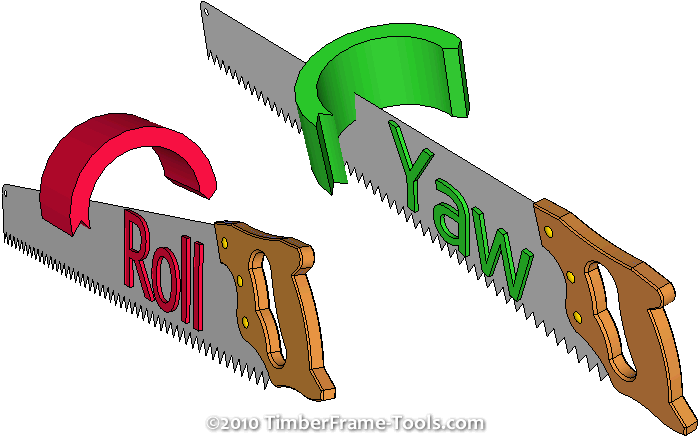Every time I start a “natural timber” project where logs and branches are used without flat surfaces, I end up dealing with issues related to cutting “square” to something that is round or at least round-ish. They are seldom perfectly round, and rarely straight. So when cutting them to length or cutting shoulders for a tenon, the question of cutting SQUARE to WHAT? is a common one.
A combination square, or speed square is rarely of any help in this situation. They all need a flat face to register against. A framing square is occasionally of help to at least ballpark the general idea of square, but you can’t draw a square line on a round log. So how do you cut square to a round log or branch? Reflect on it a while and the answer becomes very clear.

The reflection is the key to sawing "square" to the round branch.
Quite literally, the reflection of the branch in the handsaw is the best guide available. In the photo on the left, the reflection of the branch in the saw is not in line with the rest of the branch. It indicates that the saw blade it leaning too far to the right (roll). In the image on the right, the reflection makes the wood branch look continuous, therefore the saw is perpendicular to the branch. Probably more accurate to say that the branch is Normal to the surface of the saw blade.
The reflection method will not only tell you if the saw is leaning left or right (roll), but it will also indicate whether the saw is turned right or left (yaw).

Roll describes a saw that is leaning, while yaw describes a saw that is turned.
In most cases, you want no roll and no yaw and the reflection will tell you when you have aligned your saw correctly. The other nice effect of the reflection in the saw is that it can guide you through the entire cut.

Being off in either roll or yaw, is easily spotted by looking at the reflection of the wood in the saw.
This reflection method can be used for nearly any crosscut so there is some value in making sure that your crosscut saws have a shiny face to them. I rarely find the reflection useful when ripping, so a rip saw could have a less reflective face without any ill effects. However, a rough surface can lead to more friction, so there is still reason to keep a rip saw clean and smooth.